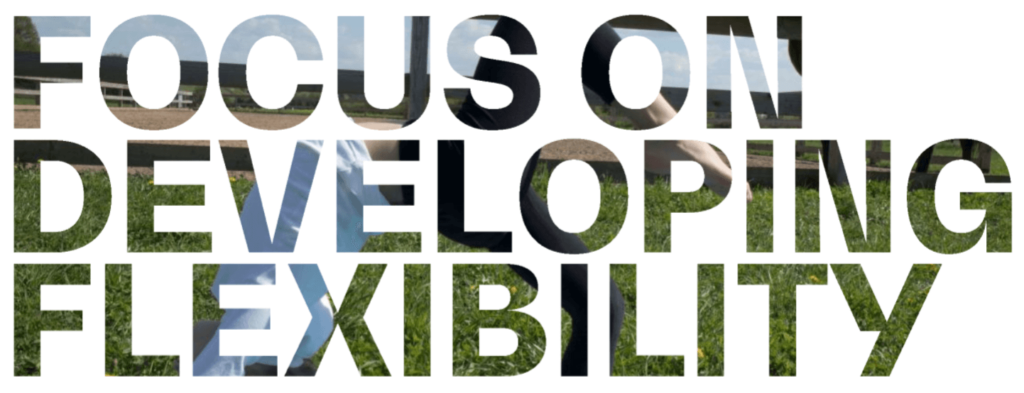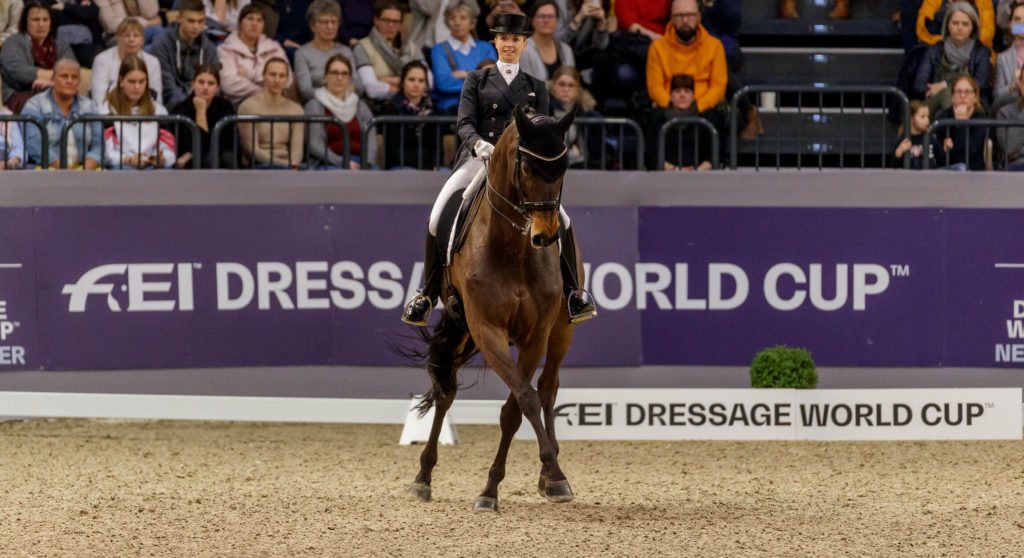FEI’s Sophie Baker shares four stretches that we all should be doing daily to help ourselves become as loose and supple as our horses.
 Photo by FEI.
Photo by FEI.
When you get on your horse, before you start asking for proper work, what’s the first thing you do? Ask him to stretch and loosen his body to warm up before you expect him to perform.
While we’re all pretty diligent about making sure our horses are supple and loose, most riders don’t extend the same thinking to themselves. When was the last time you stretched before you headed to the mounting block? Or, indeed, the last time you incorporated regular stretching into your daily life to make yourself more flexible and loose?
Because our sport requires flexibility in very specific joints and muscles, and the ability to tighten and engage others, it’s important to make sure that you’re doing stretches which will aid your abilities in the saddle and help tackle common tight areas which prevent you from performing at your best. Riders often need to focus on developing flexibility in their hamstrings, hip flexors, lower back, and heels and ankles.
These 4 stretches will help you to move in harmony with the horse, sit in better alignment, and get that picture perfect posture we all strive towards. Each example shows the steps to perform the stretch on one side, but you should of course repeat on the other side as well.
 This horse and rider are very supple! Photo by FEI.
This horse and rider are very supple! Photo by FEI.
1. Hip Flexor Lunge Stretch
Combating tightness in the hip flexors can help you to achieve that lovely relaxed and independent seat (and make getting on your horse a lot easier).
Riders who are stiff in the hip flexors can be very stiff and tight in the saddle, or are even sometimes the opposite and look too floppy as they lack the suppleness to follow the horse correctly. Done correctly, the following stretch will loosen up those hip flexors.
- Start by kneeling down with your back straight
- Bring your right leg forward until your knee is bent at 90 degrees and is in line with your ankle, in a “lunge” position on your knees
- Sink your hips towards the ground while keeping them facing forward
- For additional benefits, stretch up towards the ceiling with the opposite arm to the leg that is outstretched in front of you (the left arm, in the above example)
- See an example of the stretch here
2. Supine Spinal Twist (for lower back)
Lower back pain and stiffness is a common complaint in horse riders. Because the lower back works so hard to stabilize you in the saddle and is crucial in maintaining correct alignment, it’s important that your back is both strong and supple enough to handle it. Riders will often find that their back takes more strain in sitting trot or when doing lots of canter work, which both require a lot of mobility in the area.
This stretch can help to improve mobility and to help ease lower back pain. You’ll feel the stretch working in your back, but likely also in your hamstrings and glutes.
- Lie on your back with your legs flat
- Bend your left knee and raise it towards your chest, then reach across with your right hand to hold your knee
- Stretch your left arm out straight to the side
- Still keeping your right hand on your (left) knee, drop your left knee to the right side of your body, while keeping your shoulders straight and your back flat
- See an example of the stretch here
3. Downward Dog Calf and Ankle Stretch
Stretching your calves and ankles helps Dressage riders to achieve a “longer” leg and that very elegant look in the saddle. However, it’s also useful for riders who jump as the ankle and calf need to sink down and absorb the movement of the horse’s jump over fences. Plus, riding with short stirrups can make your calves and ankles tight from strain.
This stretch will help to keep you supple, still, and relaxed in your lower leg. Yep, it’s the good old downward dog!
- Stand upright, and then fold at the hip, putting your hands on the ground
- You should make an inverted V with hands and feet on the ground and your hips in the air
- Bend one knee, and push the opposite heel to the ground to feel the stretch in your calf and ankle
- See an example of the stretch here
4. Door Frame Shoulder Stretch
Hunched shoulders are a sure way to spoil an otherwise-good image of you as a rider. Not only does it detract from the overall look, but hunched shoulders also make you less effective in the saddle. You’re likely to round your back if your shoulders are rolled forward, which makes it harder to apply your seat aids correctly. Rounded shoulders will also make your arms stiffer, so you won’t be able to create that soft, elastic contact we’re all striving for. To get those shoulders back and your chest open, try this stretch.
- Find a door frame and stand in the middle with the door open.
- Put each hand on the side of the door frame, just above head height
- Take a step forward with one foot into a very slight lunge, while keeping your hands on the frame
- Alternatively, you can keep your feet where they are and just gently lean forward into the stretch, making sure not to arch your back
- You should feel the stretch open up your chest, shoulders, and upper back
- See an example of the stretch here
Regular, focused stretching is a good way to improve your abilities in the saddle without having to log more hours.
As top riders will tell you, you need to be just as much an athlete as your horse. If you incorporate these stretches into a regular workout program the same way you painstakingly stretch your horse, you should start to feel more supple in the saddle, and begin to notice your aids become more effective.
